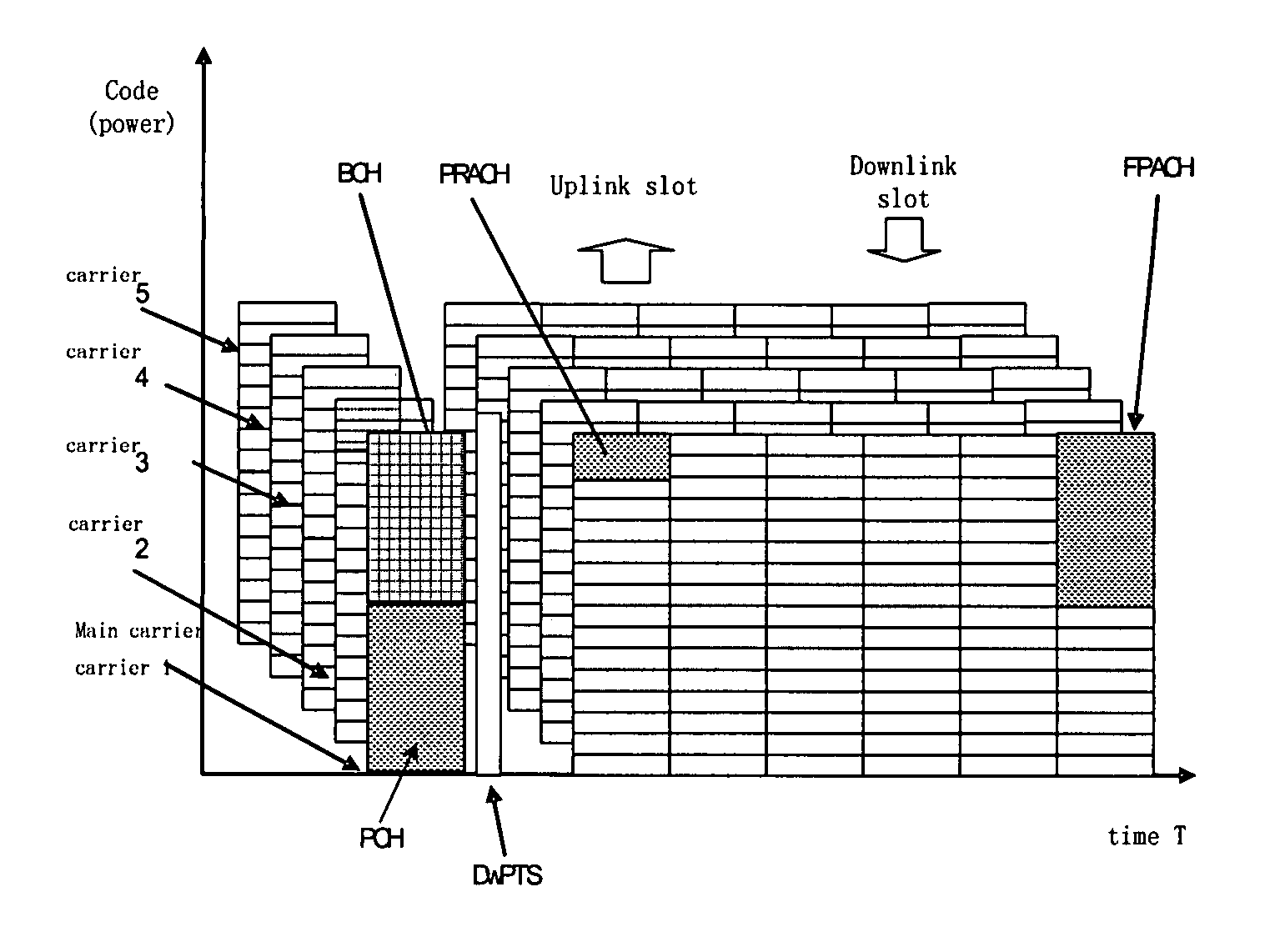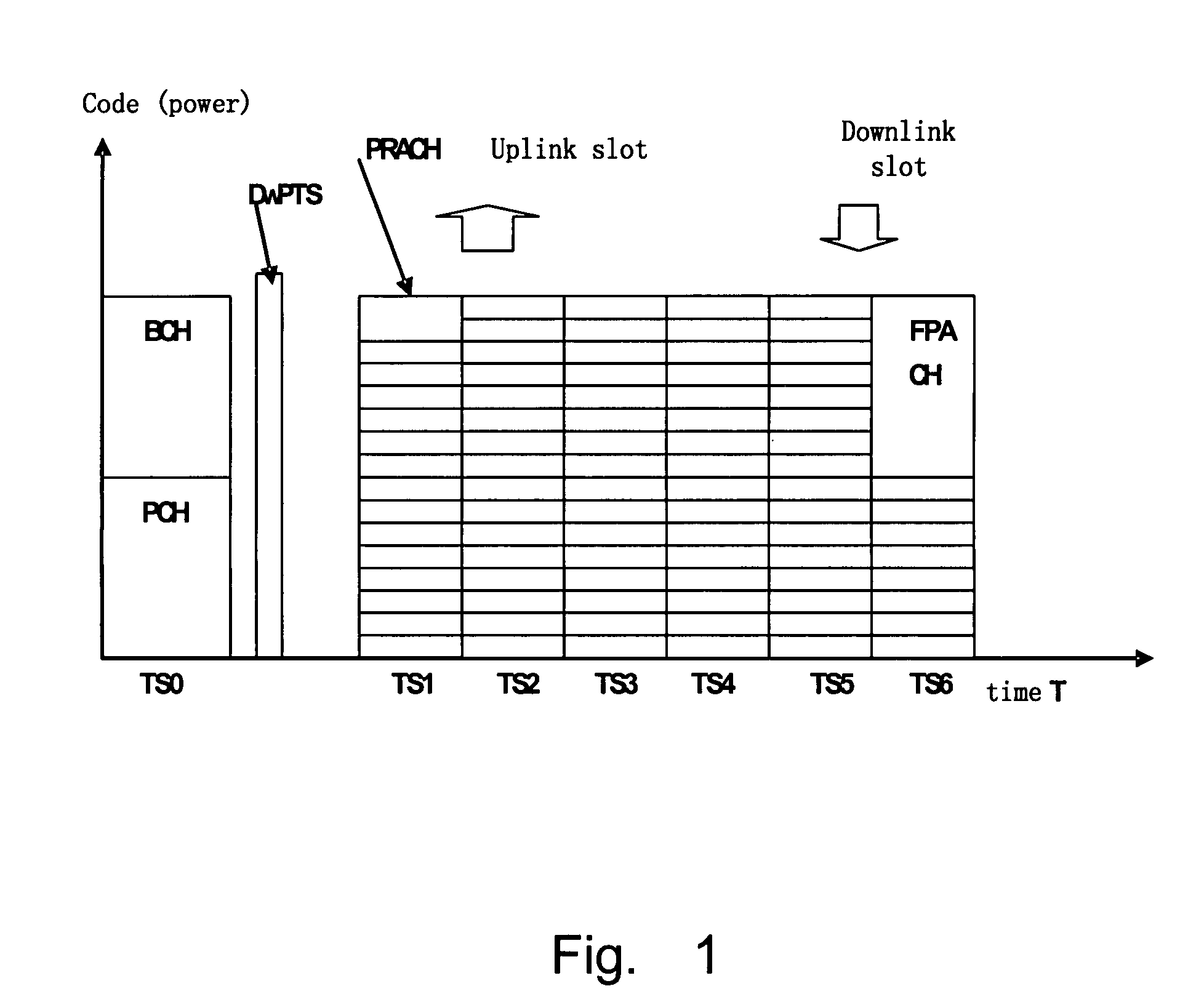Method for allocating radio resource in multi-carrier time division duplex mobile communication system
a mobile communication system and multi-carrier technology, applied in the field of mobile communication technologies, to achieve the effect of reducing interference, improving system efficiency and capacity, and simple management and control
- Summary
- Abstract
- Description
- Claims
- Application Information
AI Technical Summary
Benefits of technology
Problems solved by technology
Method used
Image
Examples
Embodiment Construction
[0028]The present invention discloses a channel arrangement (resource allocation) method for a multi-carrier base station and is illustrated by taking a TD-SCDMA system as an example. In the invention, a cell or a sector served by a base station with multi-carriers and covering a same or approximately a same area is regarded as one cell.
[0029]FIG. 3 shows the architecture of a multi-carrier multi-cell base station. This multi-carrier base station can support one or more cell (or sector) and includes a common control and interface unit 530, a multi-carrier base band processing unit 520, multi-carrier IF processing units 511, 512, 513 . . . 51n and multi-carrier RF units 501, 502, 503 . . . 50n. The RF units 501, 502, 503 . . . 50n include antennas (single antenna or an antenna array composed by multiple antennas), feed lines and RF transceivers. Base station design including working frequency bandwidth and output power level is determined according to the supported number of carriers...
PUM
 Login to View More
Login to View More Abstract
Description
Claims
Application Information
 Login to View More
Login to View More - R&D
- Intellectual Property
- Life Sciences
- Materials
- Tech Scout
- Unparalleled Data Quality
- Higher Quality Content
- 60% Fewer Hallucinations
Browse by: Latest US Patents, China's latest patents, Technical Efficacy Thesaurus, Application Domain, Technology Topic, Popular Technical Reports.
© 2025 PatSnap. All rights reserved.Legal|Privacy policy|Modern Slavery Act Transparency Statement|Sitemap|About US| Contact US: help@patsnap.com



